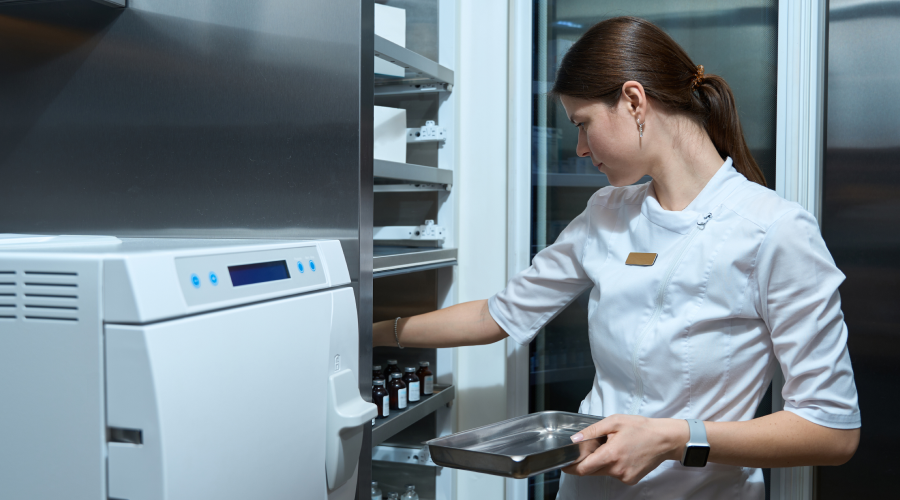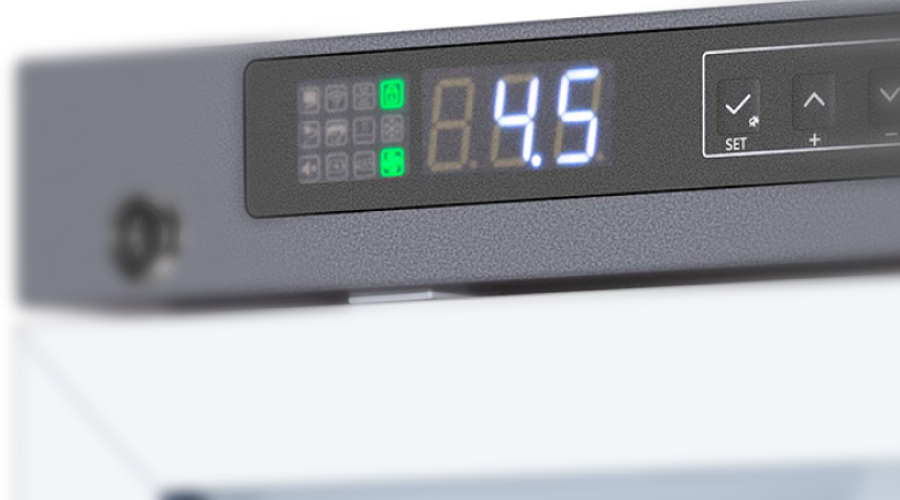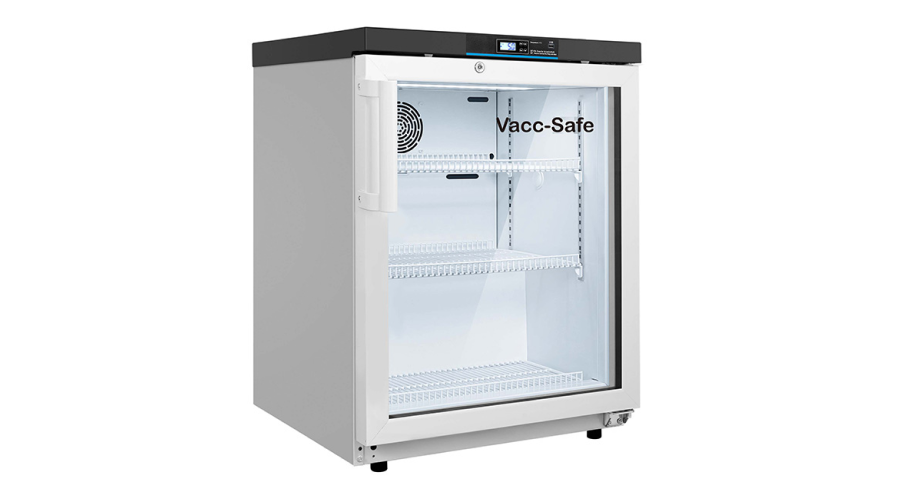Laboratory fridges and freezers are specifically designed to maintain stable temperatures for temperature-sensitive materials like biological samples, chemicals, vaccines and medicines. They are purpose built to meet the strict standards required for the safe storage of these temperature-sensitive products. There are a variety of laboratory fridges and freezers each with different temperature control parameters. Laboratory fridges are required to operate between 2°C and 8°C to meet cold chain requirements. Freezer temperature options fall between -10°C to -25°C and -20°C to -40°C for a standard laboratory freezer to -86°C to -40°C for an ultra low temperature freezer. Vacc-Safe has a wide range of laboratory fridges and freezers, and this article will guide you through the different types, explain what a laboratory fridge and freezer is, what they are used for, and the difference between a laboratory fridge and freezer.
Laboratory Fridges
Designed to maintain specific temperature parameters of between 2°C and 8°C, there are a range of medical fridges to suit varying purposes in a laboratory setting. The key types of laboratory fridges from Vacc-Safe include underbench units, portable refrigerators and larger premium units for maximum storage allowance of temperature-sensitive products.
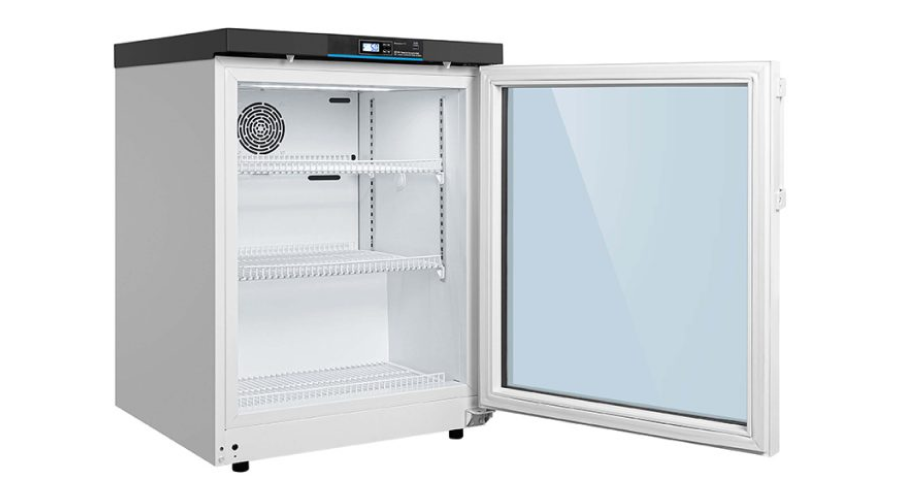
Underbench Refrigerators
The Vacc-Safe Underbench Refrigerator is available in two sizes – 50 litre or 150 litre. This medical refrigerator is ideal for storing vaccines, medicines and biological samples that require storage temperature of between 2°C and 8°C.
Features
- 2°C-8°C Pharmacy Refrigerator
- Precise temperature control within +/- 1 degree variance
- QCPP Approved
- Inbuilt USB Data Logger
- Heated Door to stop condensation
- BMS Connectivity
- Controller Battery Backup
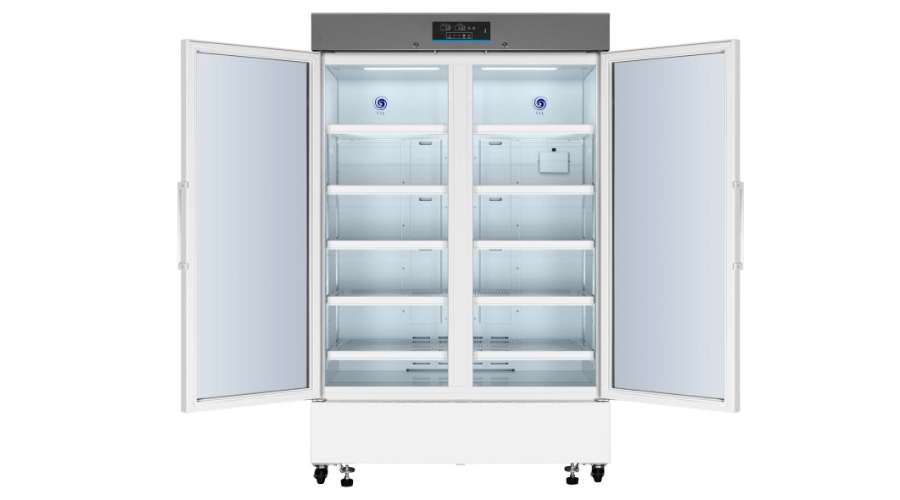
Premium Refrigerators
These premium refrigerators are ideal for larger volume storage in laboratories with sizes ranging from 350 litre, 416 litre, 606 litre, 756 litre and 1006 litre. With strong cooling air flow from the top to bottom, they maintain strict temperature parameters of 2°C to 8°C, detecting within +/- 1 degree variance in temperature for real-time alert monitoring.
Features
- 2°C-8°C Pharmacy Refrigerator
- Precise temperature control
- QCPP Approved
- Inbuilt USB Data Logger
- Dual LED display
- Security
- Self closing door
- Built in controller battery backup
- DC Turbo fan
- Built in air duct
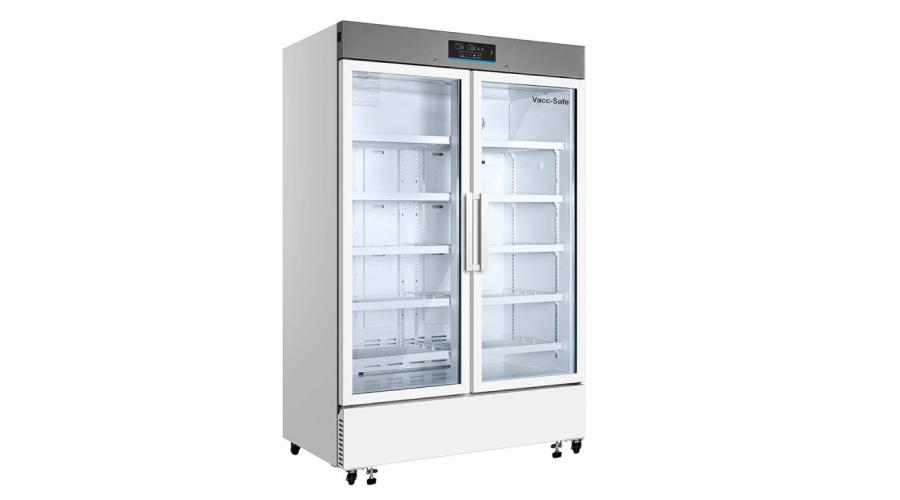
Inbuilt battery Refrigerators
The Vacc-Safe PowerGuard has a built-in UPS. This 2°C to 8°C refrigerator is ideal for laboratory use and ensures compliance with the National Vaccine Storage Guidelines. The UPS switches to battery power during an outage so that the medical fridge can maintain the required temperature for temperature-sensitive biological products, vaccines and medicines.
Features
- 2°C-8°C Medical Refrigerator
- Integrated UPS battery backup
- Minimum 5 hour run-time option
- Dual LED display
- USB data
- Audio and visual alarms
- Lockable
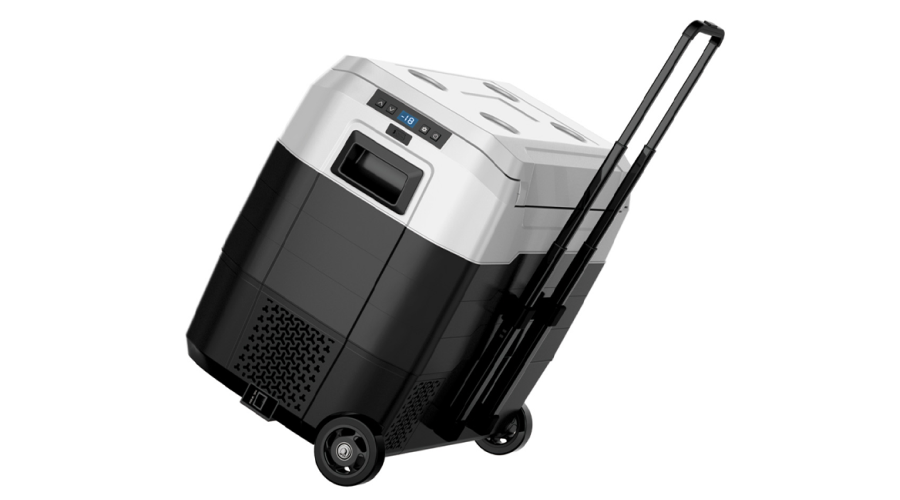
Portable Refrigerators
During transportation of temperature-sensitive biological samples or medical products, a portable refrigerator is ideal. Portable refrigerators are available in a variety of sizes from 6 litre to 50 litre. They are active cooling medical transportation devices that keep products between the parameters of 2°C and 8°C.
Features
- 2°C-8°C Portable Refrigerator
- Precise temperature control within +/- 1 degree variance
- Built-in backup battery
- Security
- Single LED Display
Laboratory Freezers
Laboratory freezers are designed to maintain specific temperatures for temperature-sensitive medicines, vaccines and biological samples but they have several different temperature variant options. Purpose built for laboratory settings, each type of freezer ensures safe and secure storage for temperature-sensitive products. The main types of laboratory freezers have temperature ranges of below zero to – 25°C, below zero -40°C, below zero -60°C, ultra low temperature freezers -86°C, and combination fridge freezers.
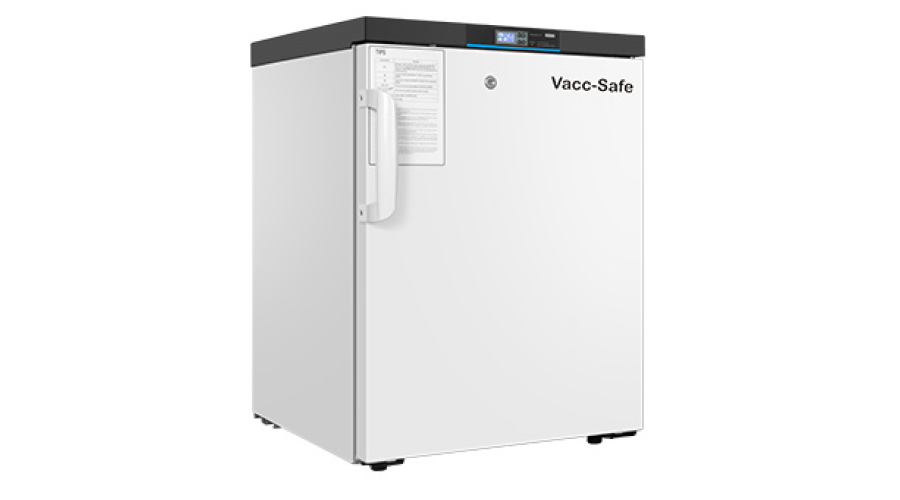
Below zero to – 25°C Freezers
Vacc-Safe Biomedical Freezers are ideal for industries where strict temperature control is needed. These freezers are available in a variety of sizes including 106 litre, 314 litre, 368 litre, 450 litre, 518 litre and 568 litre.
Features
- Medical Freezers for -25°C to -10°C
- Precise temperature control within +/- 1 degree variance
- Built-in controller battery backup
- LCD Display
- USB Data
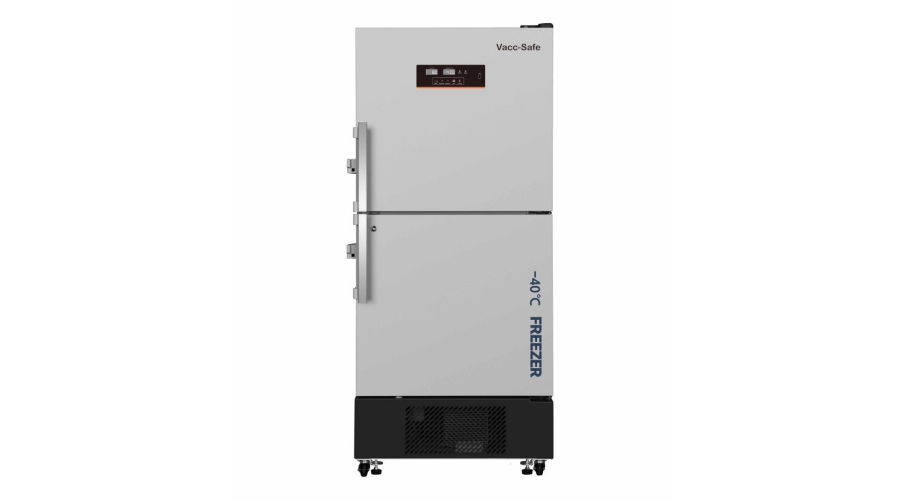
Below Zero to -40°C Freezers
These types of freezers are for laboratories that require very low temperature storage for biological and medical samples. They are specialised with features like thicker insulation and internal doors to ensure stable freezing cold environmental conditions. They are available in a variety of sizes from 100 litre to 518 litre.
Features
- Medical Freezers for -40°C to -20°C
- Precise temperature control within +/- 1 degree variance
- Built in controller battery backup
- USB Data
- LCD Display
- Security
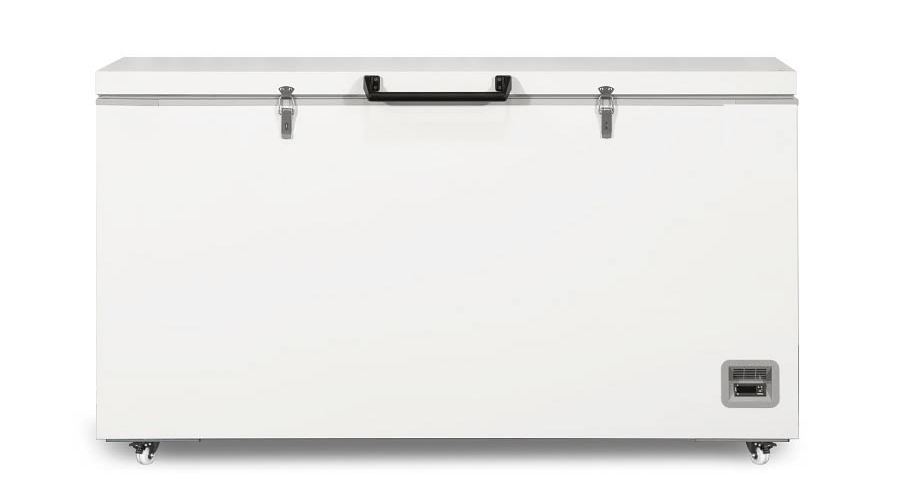
Below Zero to -60°C Freezers
Laboratory chest freezers provide icy cold temperatures that are suitable for laboratory use when storing biological samples and medicines that require ultra freezing temperatures below -25°C for efficacy. Chest freezers are also ideal for hospitality, storing fish and sushi that needs -40°C to -60° for safe storage. They are available in two sizes either 100 litres or 485 litres.
Features
- Medical Freezers for -60°C to -25°C
- Precise temperature control within +/- 1 degree variance
- Lockable
- Security
- USB Data
- Single LED Display
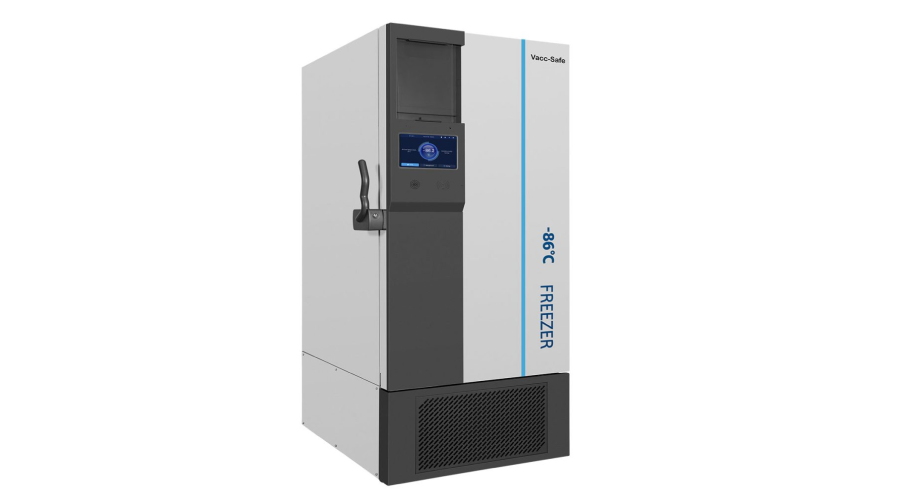
Ultra Low Temperature Freezers
Vacc-Safe DualGuard ULT freezers can be used for the storage and protection of temperature-sensitive samples and valuable laboratory products. These freezers have two refrigeration systems so one can be used as a backup in case of a system failure. The temperature range is -86°C to -40°C.
Features
- -86°C to -40°C Ultra Low Freezer
- Fast Cabinet Pull Down
- Double Inner Doors
- Multi layer silicon sealing structure
- Built-in controller battery backup
- Single LED Display
- USB Data
What is a Laboratory Fridge and Freezer?
Laboratory fridges and freezers are specifically designed units for storing temperature-sensitive materials for use in a laboratory. The right temperature for biological samples and medications will depend on the type of biological sample, storage time and preservative agent. The type of materials that need storage in a laboratory fridge or freezer include medicines like vaccines and insulin, blood, plasma, bone marrow or stem cells, skin tissue or even forensic samples for investigation. All of these samples and medicines rely on a number of factors that laboratory fridges and freezers can supply in order to keep them safe and effective. Regardless of the method of storage, whether laboratory fridge or freezer, each must have precise temperature control, monitors and alarms, specialised features, compliance and safety features.
What are Laboratory Fridges and Freezers Used For?
Laboratory fridges and freezers provide stable temperatures for temperature-sensitive materials for use in laboratories. Laboratories are facilities where experiments and research are carried out on biological samples, tests are performed on medical products and forensic investigations take place. Grad students out of university, pathologists, scientists and medical researchers all rely on a controlled environment and the precise storage conditions only a medical fridge or freezer can provide. The myriad of uses for laboratory fridges and freezers include:
- Sample preservation: Samples like blood, tissue, DNA, enzymes and vaccines need to be stored at specific temperatures for preservation. Without specifically designed medical fridges or freezers, these samples would degrade quickly and be unusable for experimentation or research.
- Chemical and reagent storage: Some chemicals and reagents require specific controlled temperatures to prevent degradation and maintain sample integrity. The cold temperatures slow down any chemical reactions that can cause degradation, and ensure samples have a longer lifespan for experimental results. Reagents may be used for specific tests like blood, glucose or kidney function tests. They establish the relationship between chemical and organic compounds in the experiment or test.
- Pharmaceutical storage: Vaccines and some medications are temperature sensitive and require specific temperature-controlled environments like those of medical fridges or freezers. During development some of these types of medications and vaccines may undergo testing in laboratories and it is essential they are kept at controlled temperatures so they don’t become ineffective.
- Biological sample storage: Biological samples that are crucial for research, testing or experimentation must be stored in temperature-controlled conditions like a medical fridge or medical freezer. Without the strict parameters in temperature control they will deteriorate and lose their usefulness for scientific research or testing.
Difference Between a Laboratory Fridge and Freezer
The main difference between a laboratory fridge and freezer is the temperature range and intended use. Both are specifically designed for temperature control, security, durability and consistent air flow but there are some major differences.
Laboratory Fridge
- Temperature range: A laboratory fridge, or medical grade fridge, has a strict temperature range of 2°C to 8°C for the safe storage of medicines and biological samples.
- Storage use: Biological samples, vaccines, medicines, chemicals, reagents.
- Features: Precise temperature control, alarm systems, internal airflow, lockable doors, durable construction, digital interfaces, temperature logging.
Laboratory Freezer
- Temperature range: Laboratory freezers have a temperature range from – 20°C to -86°C.
- Storage use: Biological samples, clinical specimens, pharmaceuticals, enzymes and reagents, cryopreserved materials, forensic evidence, research samples.
- Features: Precise temperature control, temperature data logging, vacuum sealed doors, LED lighting, remote monitoring, automatic defrost systems, robust construction, lockable doors, alarms.
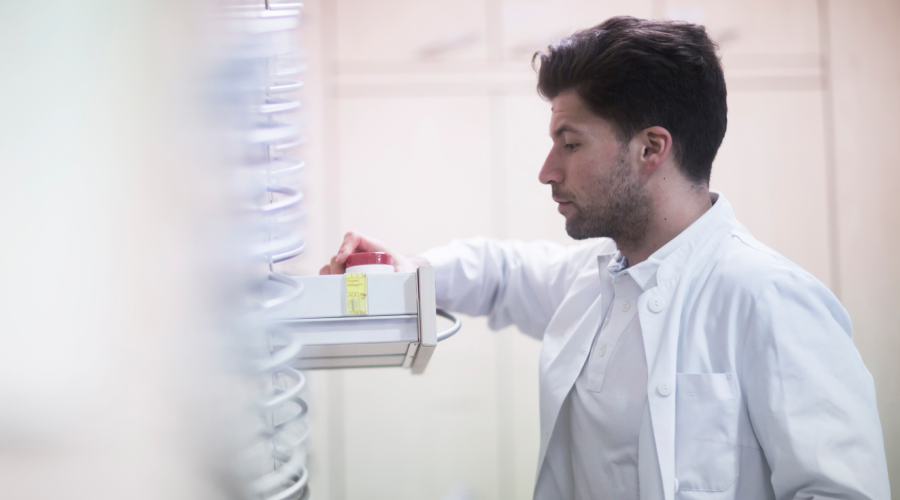
Why are Laboratory Fridges and Freezers Important?
Laboratory fridges and freezers are essential for temperature control and stability that is vital for sample storage and research, and the safekeeping of temperature-sensitive medications and vaccines. These purpose built cold storage units allow samples and medications to be kept at the correct temperature. There are a plethora of benefits of using laboratory fridges and freezers. These include:
- Sample integrity: During the process of collection to analysis, it is critical to maintain the integrity of the samples. To remain viable, they must be stored in specific temperatures that laboratory fridges or freezers provide.
- Cost savings: When laboratory fridges and freezers are used, there is less contamination and spoilage of biological samples and medicines and less need to repeat experiments which saves time and money.
- Space optimisation: With such varied size options in both laboratory fridges and freezers, there is more likelihood of finding a unit to suit your needs and space considerations.
- Disaster preparedness: As both laboratory fridges and freezers are equipped with backup power options, biological samples and medications will remain viable and kept in strict temperature guidelines in the event of an emergency or power outage.
Precautions, Servicing & Maintenance
To look after laboratory fridges and freezers it is important to know where to place them for the best results and what type of service and maintenance schedule is required. Beside regular temperature checking, laboratory fridges and freezers require practices to ensure the equipment continues to run smoothly and efficiently. To look after a laboratory fridge and freezer, follow these guidelines.
- Place laboratory fridges and freezers away from heat sources in a well ventilated location. The conditions in the room including ambient temperature will have an impact on fridge and freezer performance and can impact the contents inside the cooling units.
- Install fridges and freezers on a stable and even surface to ensure proper cooling. The surface must be flat to avoid any instability which can impact cooling ability.
- Defrost laboratory freezers every six months to avoid ice build up and improve efficiency. In between defrosting, scrape off any excess ice build up on doors, shelves or compartments.
- Perform daily checks on working performance of both laboratory fridges and freezers.
- Perform twice daily temperature monitoring.
- Schedule annual professional servicing by a qualified technician.
Laboratory fridges and freezers are essential pieces of equipment for use in laboratories for experiments, research, testing and storage purposes. They provide safe storage for biological samples, medicines and vaccines that cannot be stored in room temperature conditions. Laboratory fridges must meet the strict temperature guidelines of 2°C to 8°C for the safe storage of these medical and biological products. The temperature range of -20°C to -86°C in laboratory freezers also helps to keep these products safe. Our guide explains everything you need to know about laboratory fridges and freezers, the different types and storage requirements. For further information, contact the experts in medical fridges and freezers at Vacc-Safe.
